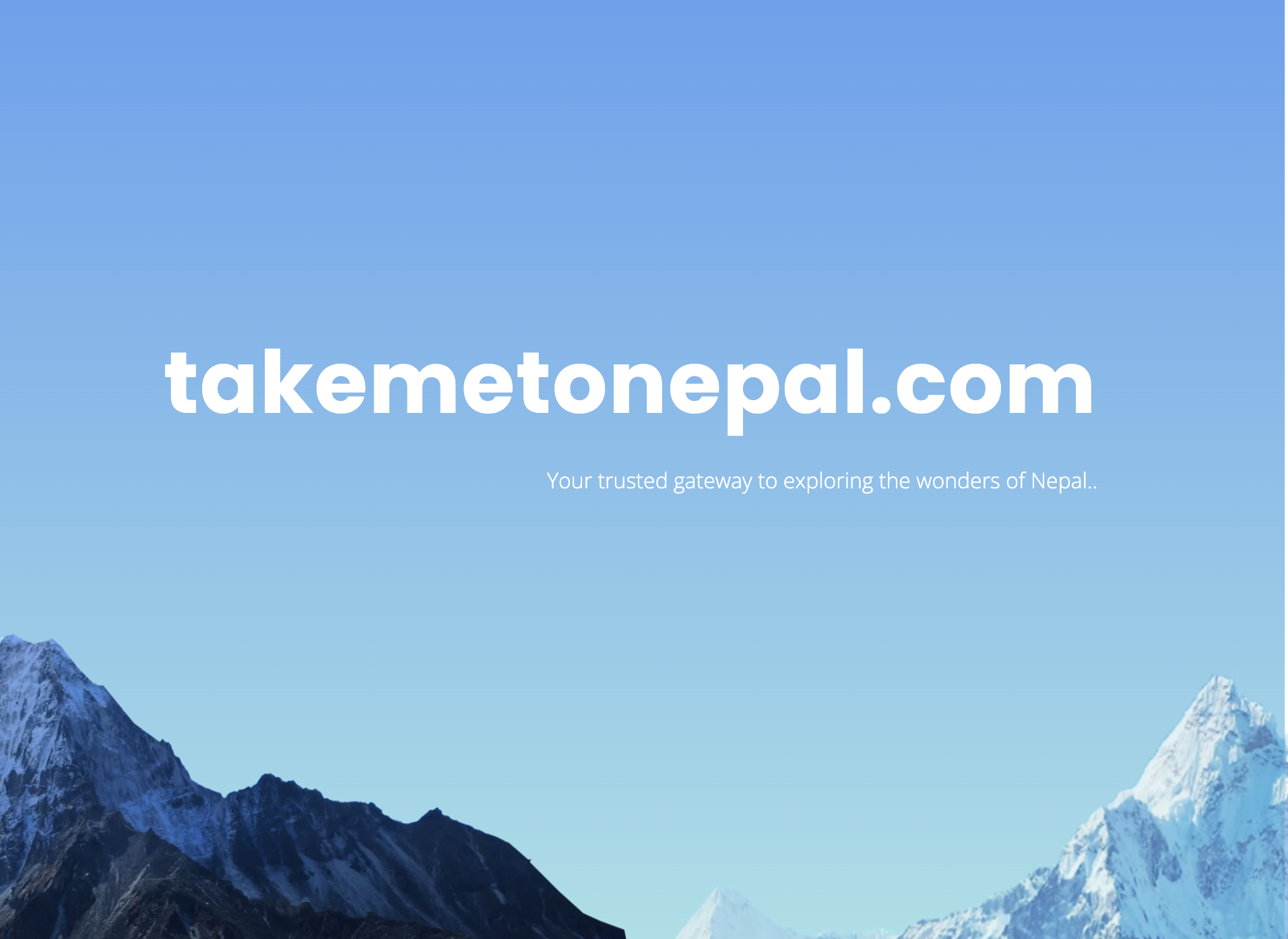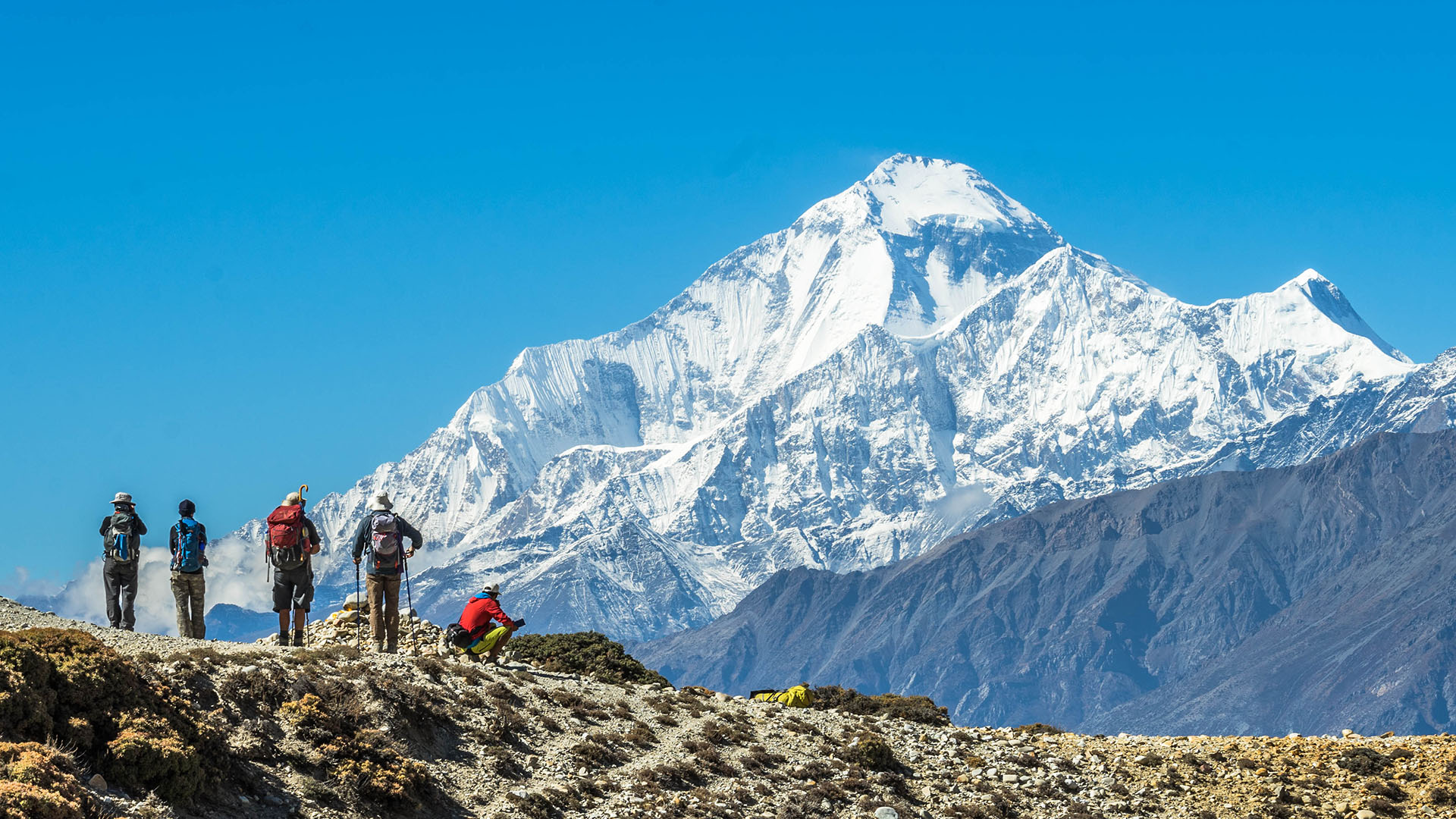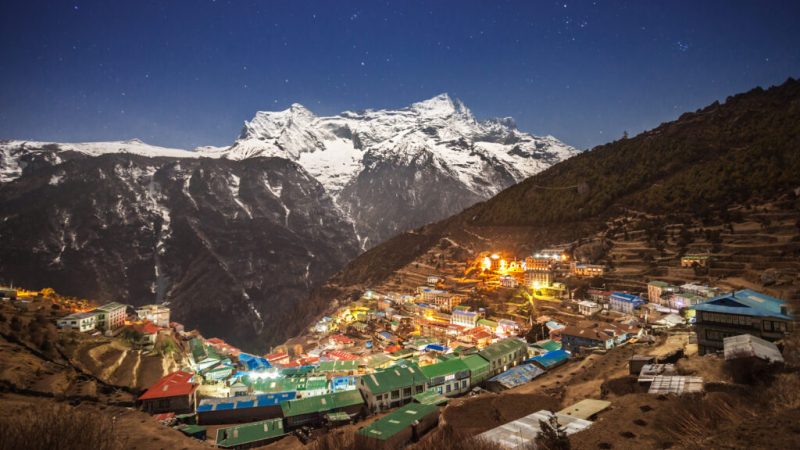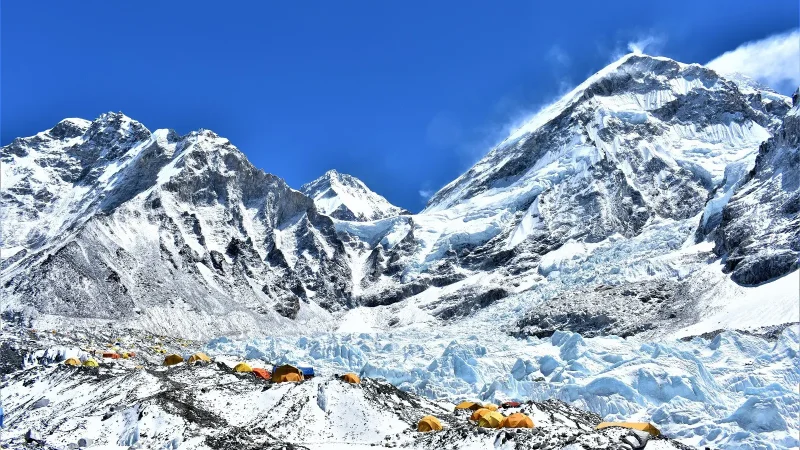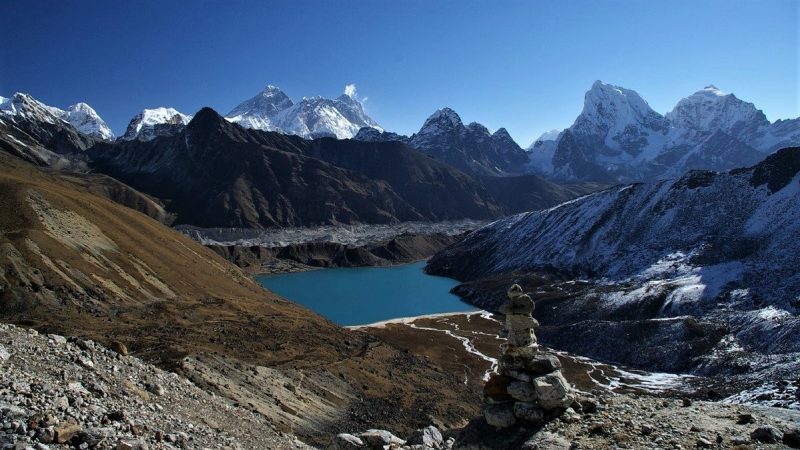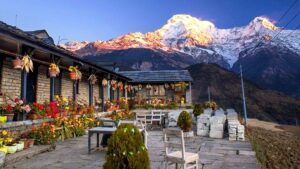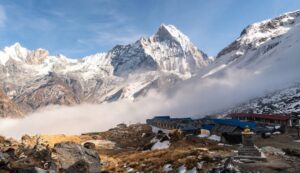Gokyo Lakes Trek
A Journey to the Roof of the World

Location
Gokyo Lakes Trek is located in the Solukhumbu region of Nepal
Best Time to Visit
Trek are pre-monsoon (March-May) and post-monsoon (September-November)

Duration
7–12 days, depending on the chosen route and acclimatization stops

Difficulty Level
Moderate to challenging. The trek includes steep ascents and high-altitude conditions

Elevation
The highest point is Gokyo Ri at 5,357 meters (17,575 feet)
Overview
The Gokyo Lakes Trek is one of the most stunning treks in the Everest region, leading trekkers to the sacred Gokyo Lakes, a group of six turquoise-colored glacial lakes. The trek takes you through traditional Sherpa villages, lush forests, and alpine meadows, culminating in panoramic views of some of the highest peaks in the world. The serene beauty of Gokyo Lakes is paired with the unparalleled view from Gokyo Ri, where you’ll witness Everest from a less crowded vantage point.
The trek provides an excellent alternative to the more popular Everest Base Camp trek, offering the same majestic mountain views but with a more peaceful, less crowded experience. Along the way, you’ll pass through the bustling town of Namche Bazaar, vibrant Sherpa villages, and the awe-inspiring Ngozumpa Glacier.
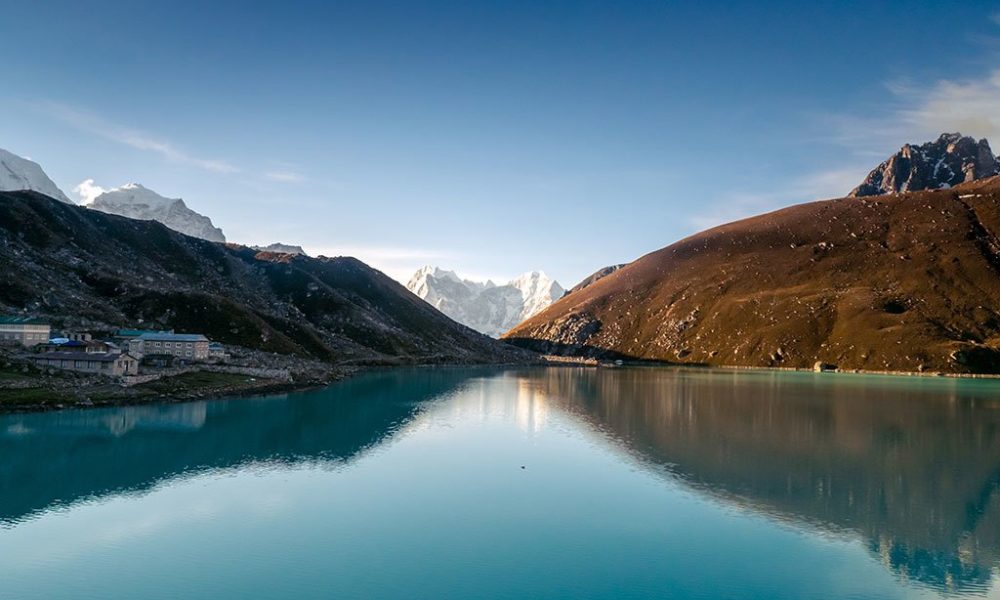
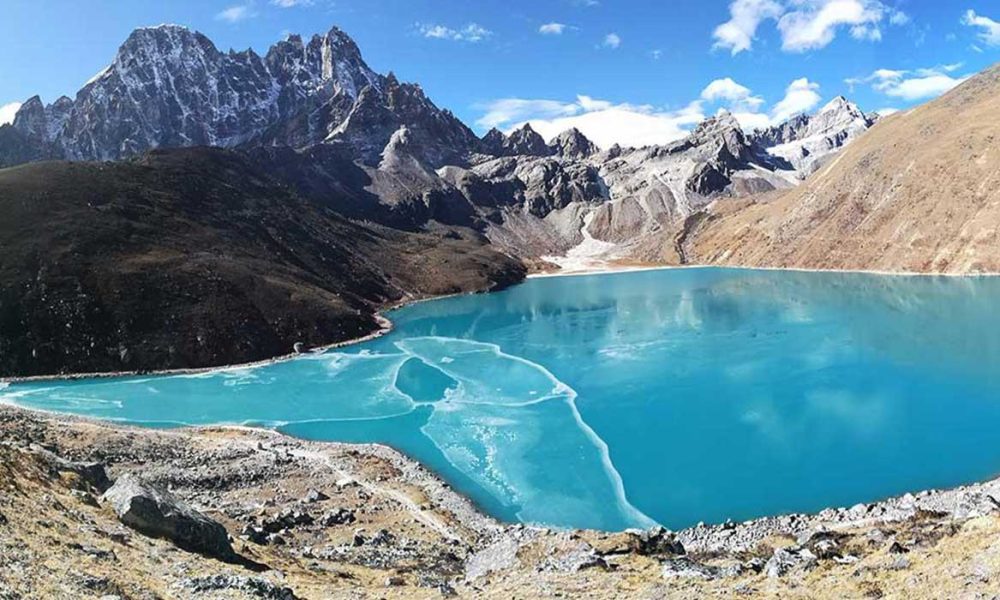
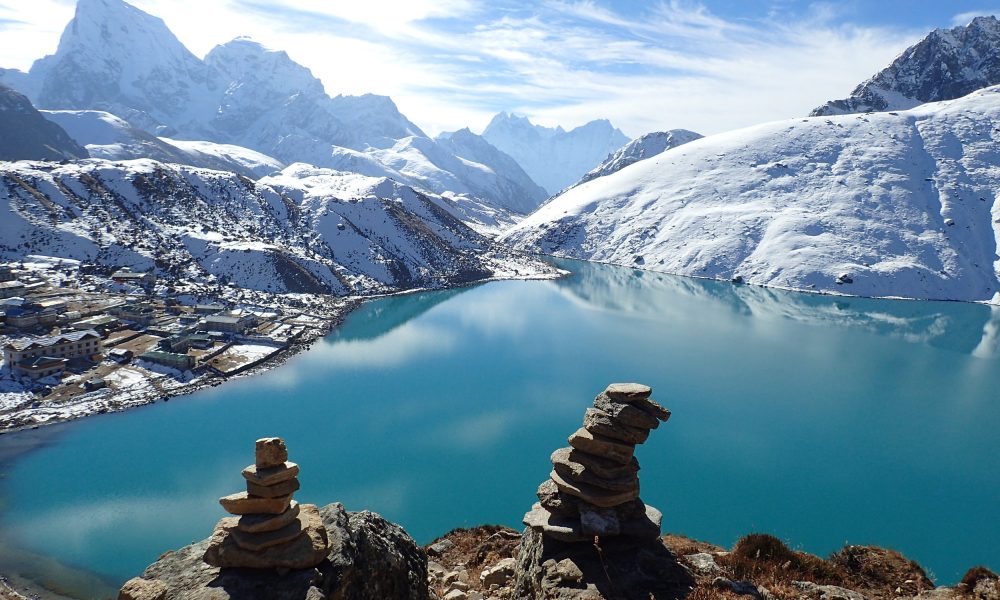
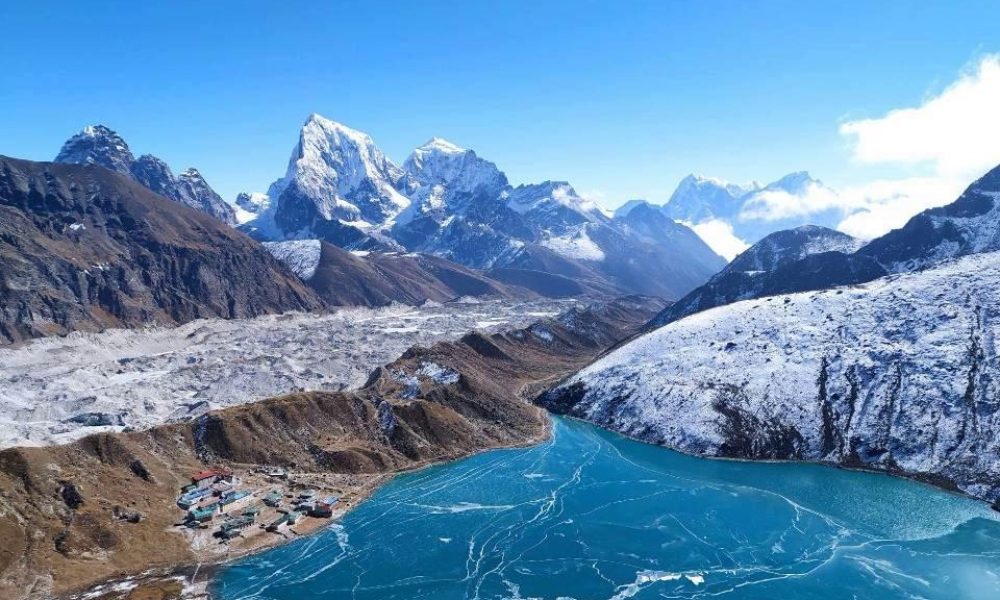
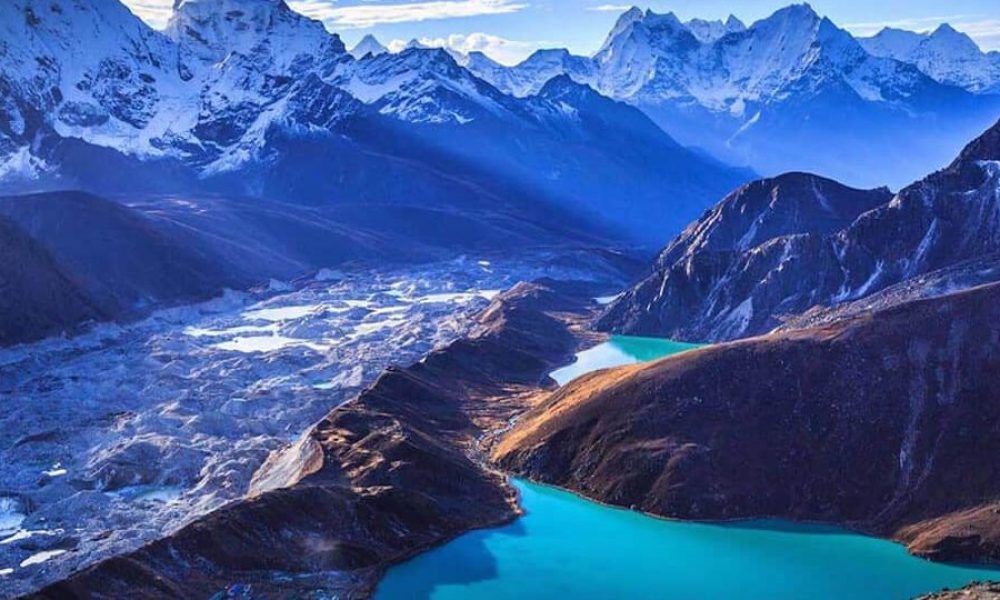
Weather and Climate
The weather on the Gokyo Lakes Trek can vary dramatically with altitude. At lower elevations, it’s generally warm and temperate, but as you gain altitude, the temperatures drop, and it can get very cold, especially at night.
- Lower altitudes (2,600m-3,500m): Pleasant daytime temperatures between 10-20°C.
- Higher altitudes (4,000m-5,357m): Daytime temperatures around 5-10°C, but nighttime temperatures can dip below freezing.
- The best trekking conditions are between March-May (spring) and September-November (autumn), when the skies are clear, and the temperatures are moderate. The summer months (June-August) can bring monsoon rains, and winter (December-February) can make the trek challenging due to heavy snow.
Geological Information
The Gokyo Lakes Trek is a geological wonderland, with rugged cliffs, glaciers, and deep valleys carved by millennia of glacial activity. The Ngozumpa Glacier, which trekkers cross, is the largest glacier in Nepal and provides an incredible landscape of icefalls and frozen rivers. The area is shaped by tectonic forces, where the shifting of plates has created towering peaks and deep valleys, giving rise to the majestic beauty of the Gokyo Lakes.
The turquoise color of the Gokyo Lakes comes from the minerals carried by glacial meltwater, and the surrounding mountains act as a majestic backdrop. The trail also takes trekkers through moraine areas, where the evidence of ancient glacial movements is still visible in the landscape.
Flora and Fauna
The Gokyo Lakes region is home to diverse plant and animal life. Lower altitudes are rich in forests of pine, rhododendron, and oak, while higher elevations feature alpine shrubs, junipers, and grasses.
- Flora: In spring, the rhododendron forests bloom, filling the air with color and fragrance. Alpine flowers like edelweiss and primroses are visible in higher meadows.
- Fauna: The region is home to a variety of wildlife, including Himalayan tahr, musk deer, and the rare snow leopard, though sightings are rare. The birdlife includes the Himalayan griffon vulture, pheasants, and the elusive red-billed chough.
History and Culture
The Gokyo Lakes are considered sacred by the local Sherpa people, and the region is deeply embedded in Buddhist culture. The Gokyo Ri summit is a sacred site, with many trekkers pausing to offer prayers at the small Buddhist chorten. Along the trek, you’ll pass through traditional Sherpa villages where you can observe their lifestyle, and the majestic monasteries in the area add a spiritual touch to the journey.
The area also has historical significance as the region where early Everest expeditions passed through in their attempt to summit the world’s highest peak.
People and Customs
The trek passes through several Sherpa villages, and their culture, deeply rooted in Tibetan Buddhism, is an essential part of the trek. You’ll pass by ancient monasteries, stupas, and prayer wheels. The Sherpa people are known for their resilience and warmth, and many of them still maintain traditional livelihoods based on farming and yak herding. During the trek, you may have the chance to witness their unique customs, traditional dress, and the importance of spirituality in their daily lives.
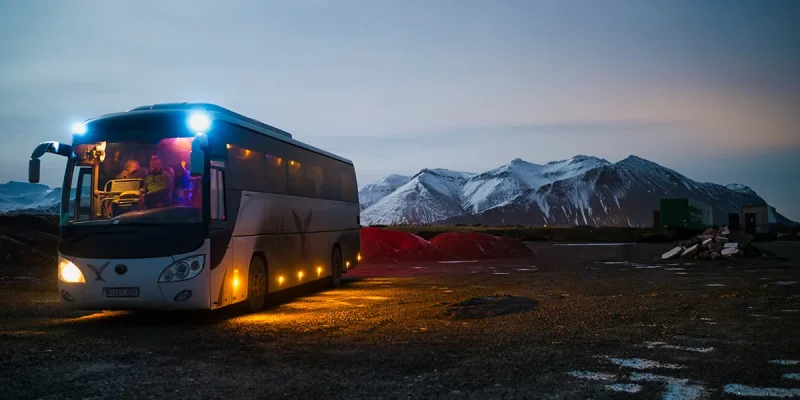
Transportation Information
- How to Reach: Fly from Kathmandu to Lukla, which is the starting point of the trek. The flight offers incredible views of the Himalayas.
- Local Transportation: From Lukla, you’ll trek through the villages of Phakding, Namche Bazaar, and further up the valley to Gokyo. No motorized transport is available beyond Lukla.
- Trekking Route: The trek is well-marked, and most trekkers ascend through Namche Bazaar and then divert towards Gokyo Lakes. Most of the trekking is done on foot, with occasional support from yaks for carrying supplies.
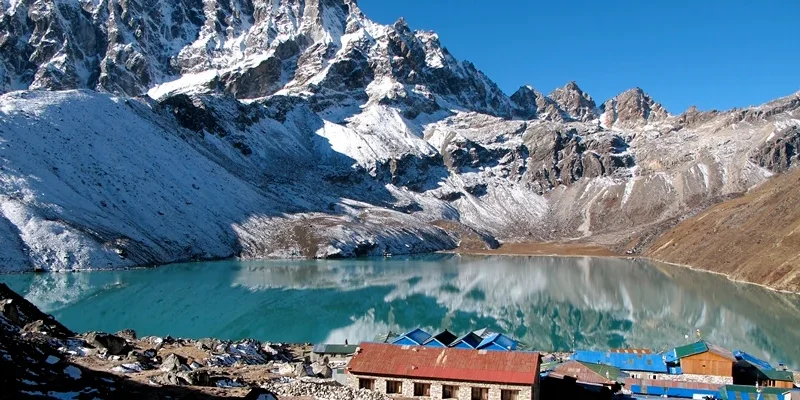
Accommodations
Accommodation along the Gokyo Lakes trek includes simple tea houses, with basic amenities. As you climb higher, the accommodations become more basic, but the warmth of the local Sherpas and their hospitality is unmatched.
Rooms typically cost around NPR 500-1,500 per night, depending on altitude and season. In higher altitudes, expect simpler rooms with fewer amenities.
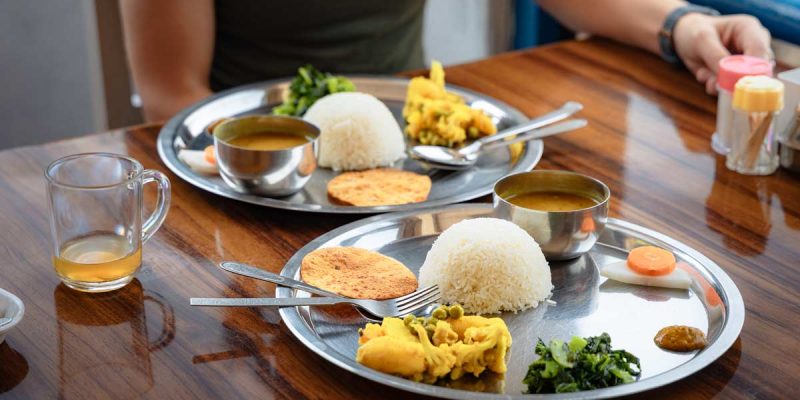
Dining and Cuisine
- Typical Meals: Expect hearty meals like dal bhat (lentils with rice), momo (dumplings), and noodle soups. In higher altitudes, hot teas and soups are essential for staying warm.
- Specialties: Sherpa stew, a comforting dish made with barley, vegetables, and yak meat, is common in the region. Don’t miss out on yak cheese, a local delicacy.
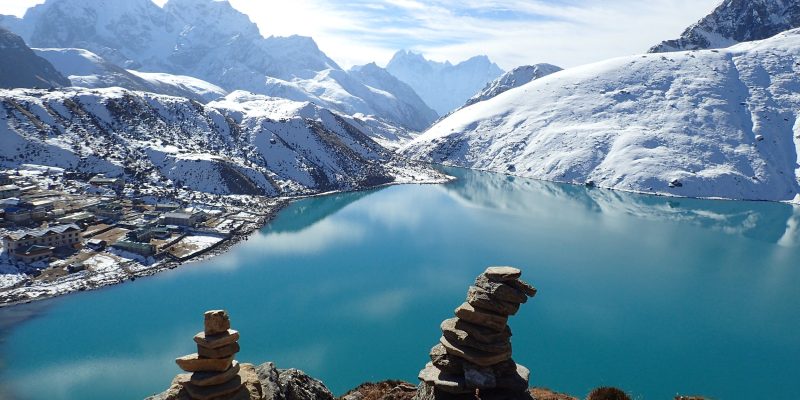
Permits and Entry Requirements
- Sagarmatha National Park Permit: NPR 3,000 (approx.)
- TIMS Card (Trekkers’ Information Management System): NPR 1,000 (approx.)
You can obtain these permits in Kathmandu or at the entrance to the Sagarmatha National Park in Monjo.
Safety Information:
- Altitude Sickness: The high altitude of the trek means that altitude sickness is a risk. Take the necessary precautions: ascend slowly, drink plenty of fluids, and listen to your body.
- Medical Attention: There are basic health services in Namche Bazaar, but higher up, medical facilities are limited.
- Vaccinations: Ensure you are up to date on vaccines such as hepatitis, typhoid, and tetanus before embarking on the trek.
Gear and Packing Lists
- Essentials: Trekking boots, waterproof jacket, layers for warmth, sun protection (hat, sunscreen).
- Altitude Gear: Warm gloves, a sleeping bag suitable for sub-zero temperatures, trekking poles, and a headlamp.
- Extras: Camera, water purification tablets, and a power bank for charging devices.
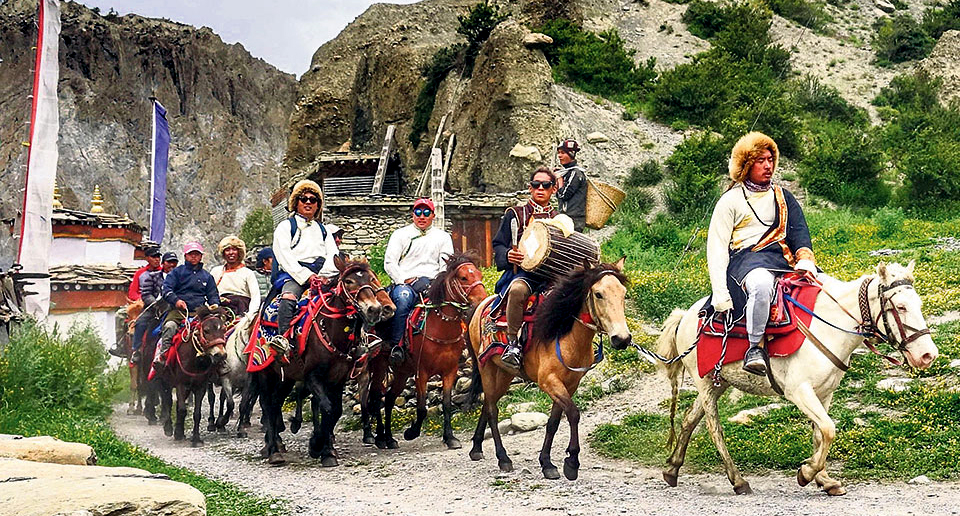
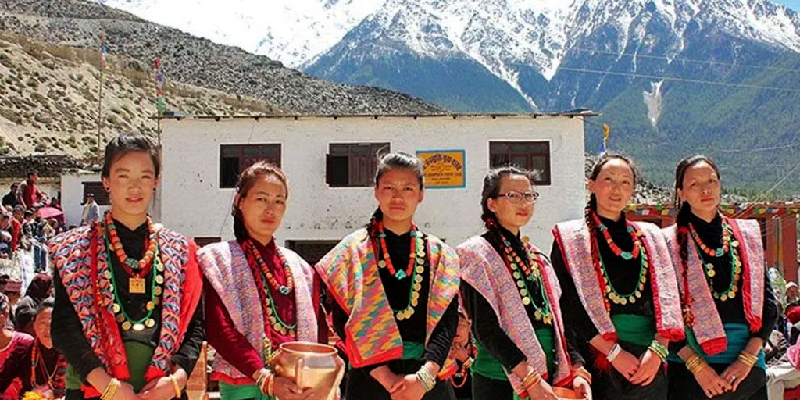
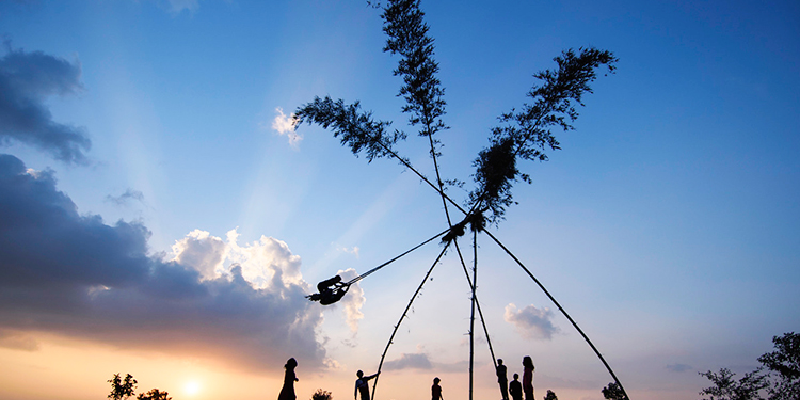
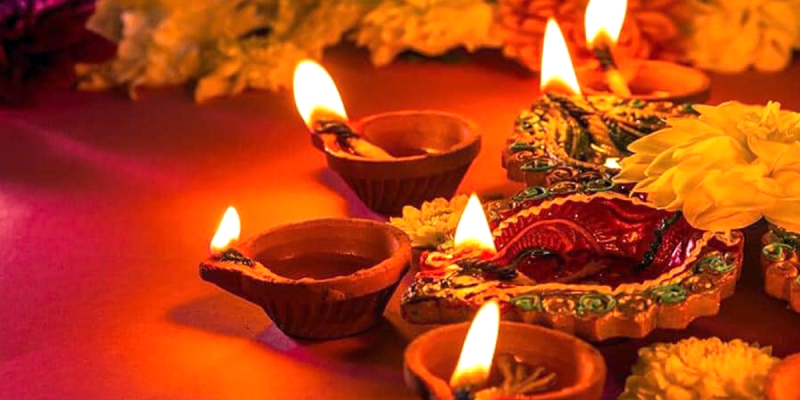
Local Festivals and Events
- Dashain and Tihar are celebrated in the region (October-November).
- Yartung Mela, celebrated from August 14 to 16 during the full moon, is a vibrant three-day festival featuring horse races, drinking, and dancing by the Gurung and Thakali communities.
- The Mitha (Dhachang) festival is a unique cultural event celebrated in the Manang Valley of Nepal. It is characterized by a traditional archery competition, which holds significant cultural and social importance for the local communities.
- Other Annual mountain festivals hosted in nearby villages.
Lets Plan A Trip
